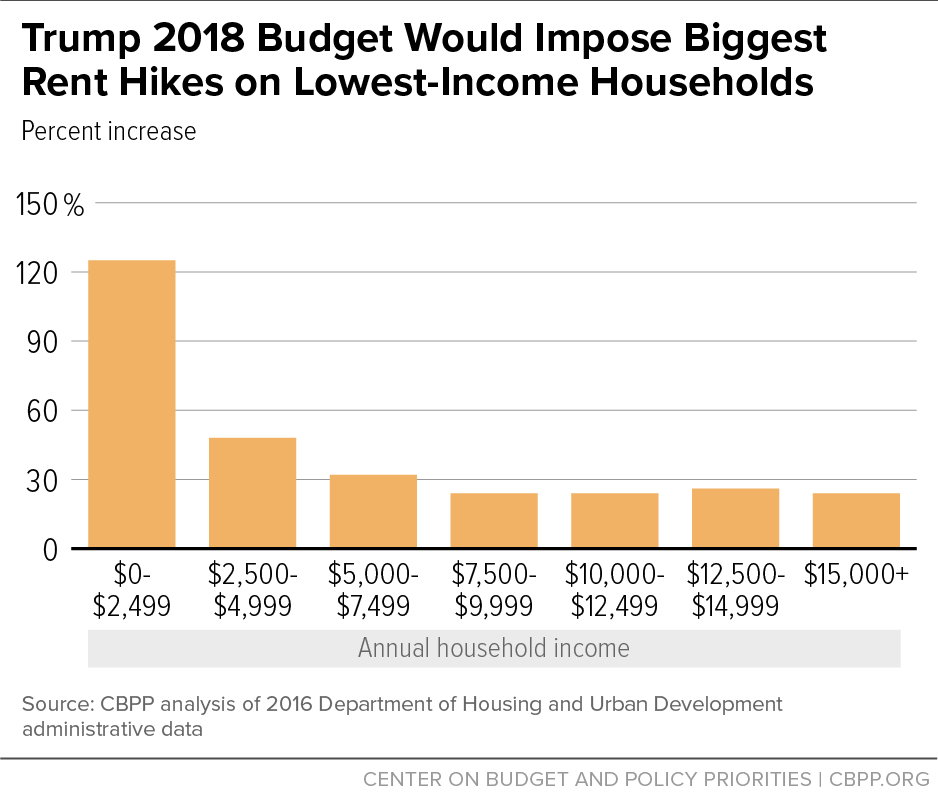BEYOND THE NUMBERS
Trump’s Housing Proposals Would Raise Rents on Struggling Families, Seniors, and People with Disabilities
President Trump’s 2018 budget could raise rents on up to 4 million low-income households that get federal rental assistance, as our new analysis shows, with some of the largest increases falling on families and individuals that struggle the most to afford housing.
The budget would increase rents by:
- Authorizing the Department of Housing and Urban Development (HUD) to require grantees to raise rents from 30 percent of a low-income family’s income to 35 percent, and to eliminate deductions from these calculations for factors that reduce a household’s ability to pay rent, such as high medical or child-related expenses;
- Eliminating assistance that helps the lowest-income rental assistance recipients cover utility bills;
- Charging the lowest-income families minimum rents of $50 a month even if this exceeds 30 percent (or 35 percent) of their income;
- Letting HUD make virtually any change to the rent rules for the housing voucher program, including imposing unlimited rent increases; and
- Cutting payments for “enhanced vouchers” that protect residents from displacement in buildings that previously received other types of federal subsidies, thereby forcing the residents to pay higher rents or lose their homes.
Our report details the impacts of the first three policy changes separately, and their combined impact at the national, state, and congressional district level.
Overall, 88 percent of the total rent increase would fall on workers, the elderly, and people with disabilities. These increases would hit the poorest families the hardest. Housing costs for households with annual incomes below $2,500 would rise by 125 percent, or $52 a month on average. (See figure.)
The proposals would have serious adverse consequences for many families that get rental assistance. Higher housing costs would force families to shift resources from other basic needs such as food, medicine, and clothing and leave workers less able to cover expenses such as transportation and child care. Some families would be unable to pay the higher costs and face the risk of eviction and even homelessness.
The Administration claims that raising rents on poor families, seniors, and people with disabilities struggling to keep a roof over their heads is necessary to reduce federal costs, even as it proposes very large tax cuts for the wealthy and profitable corporations.
In practice, the higher rents would likely provide the funds to offset only a fraction of the rental assistance cuts the Administration has proposed, partly due to the administrative difficulty of rapidly raising rents on so many low-income families. Regardless, there are surely better ways to avoid harmful cuts in programs such as vouchers and public housing than to squeeze higher rents from some of the nation’s poorest families.

